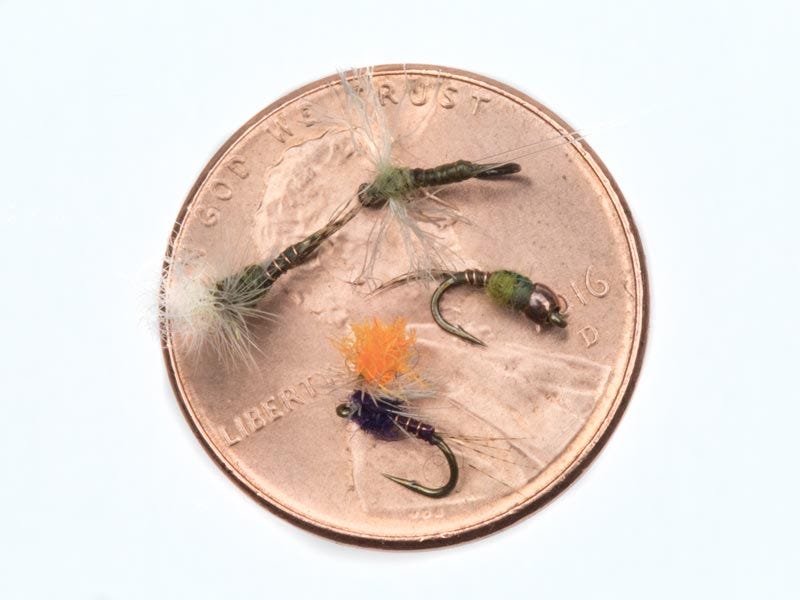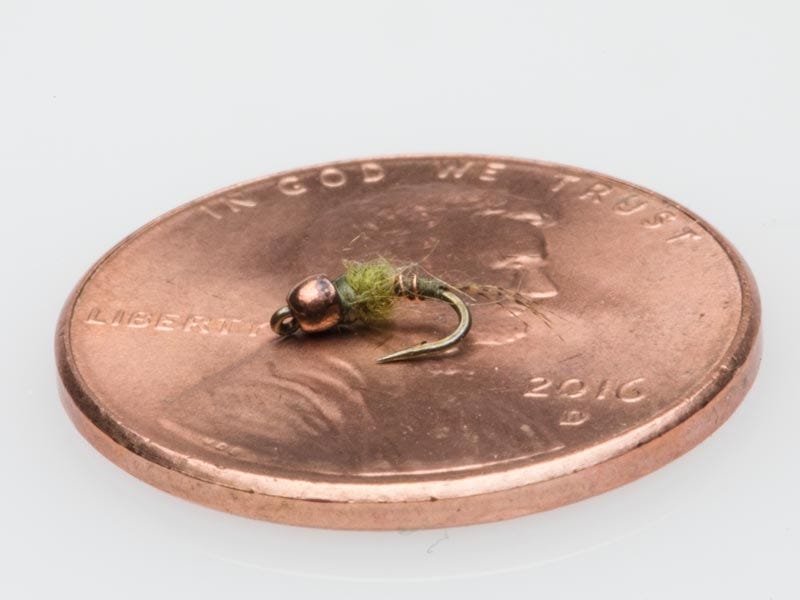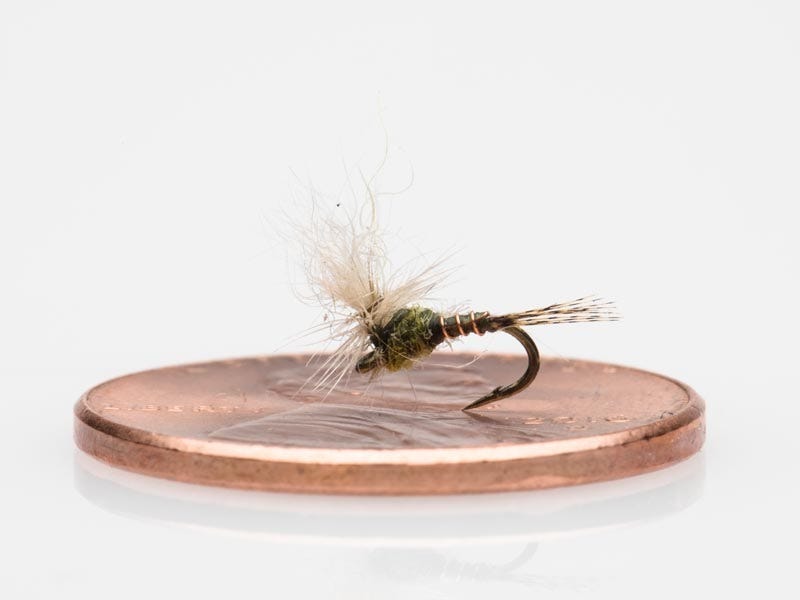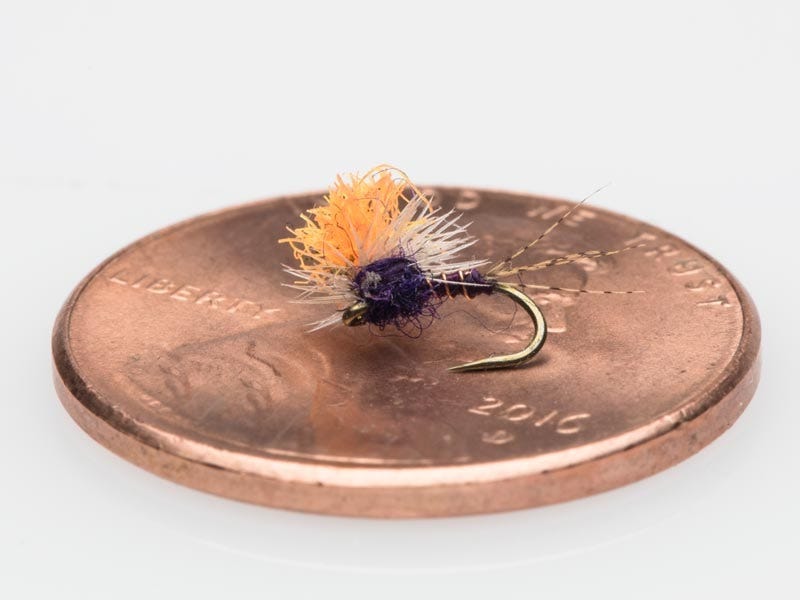Pseudo What?

Tiny in stature, these little bugs get big eats on the Missouri.
By Fred Telleen

Pseudocloeon
At least that was their name. Insects are constantly being reclassified as we learn more about them. I believe they are now in the Baetis family. Pseudo is still the name they are regionally recognized as, so I’m going to keep using it until someone gives me a better one.
For an angler, exact identification of an insect is not as critical as matching the bugs they are finding on the water while fishing, or at least the bugs (or the stage of those bugs) that the fish are feeding on. If we understand how these bugs live, hatch, mate and die, we can develop fly patterns to imitate them and strategies for fooling fish into eating them when we encounter them.
Most anglers are familiar with BWO’s or Blue Winged Olive mayflies. Pseudos are basically like tiny BWO’s without dun colored wings. If you want to get technical, they also do not have the tiny hind wings that BWO’s exhibit. Whatever you want to call them, they are mayflies. Really, tiny mayflies.
One thing we know about these Pseudo (read: “really, tiny”) mayflies is that they hatch in the fall in big numbers as the water begins to cool. Once the temp gets below 48 degrees, they are generally replaced, much to the glee of many anglers, by the larger more favored BWO’s.
One thing we know about trout, especially spring creek and tailwater trout, is that they eat an awful lot of really, tiny bugs. When the Pseudo hatches get rolling, the fish will be paying attention. Often for many weeks. The longer a hatch is in duration, the more locked onto it the fish will become. They can get really focused on Pseudos. Here is our Pseudo Program.

Nymphs
Because Pseudo Nymphs are so small, conventional nymphs are not considered effective imitations when drifted on the bottom. Conventional wisdom says the best way to fish a tiny pseudo nymph is to fish it high in the water column or on a greased leader during the emergence. My friend Kevin knows otherwise.
Kevin ties his Pseudo Nymph on a #24 TMC 2488 hook. He uses a couple wood duck fibers for the tail, olive thread for the body, extra small copper wire ribbing, olive brown Super Fine dubbing for the thorax, small green holographic tinsel for the wing case and a 1.5 millimeter copper bead.
He fishes it behind a larger fly on a typical two fly rig with a split shot under an indicator. He admits that when he first tried it, he did not think the fish would find it, but they absolutely do. He first fished it on the Beaverhead River at a spot he’d always thought should have fish but never caught any. With the tiny Pseudo, he found that the spot was loaded with big fat browns.
When he started fishing the Missouri River and found lots of Pseudo Mayflies, he tried it again. He found that it absolutely works on the MO. His wife did not believe she could get them on his little #24, but she is a believer now as well.

Emergence
Baetis, especially these tiny Pseudo baetis, are rather slow and clumsy when it comes to emerging. This is likely one reason why they find so much favor with trout. If you think about it, it can’t be easy to bust through the meniscus and crawl from your clinging exoskeleton when you are that darn small. Lots of
half dun and drowned Pseudos end up in the film. Imagine waiting your entire life to be an adult for a few short hours and you fail graduation and die.
Given the peril of emergence, fishing a nymph in the film or a cripple pattern with a hanging shuck or CDC wing is a good way to capitalize on the ineptness of the process.
So how does Kevin match this stage of the Pseudo? His emerger is tied on the same #24 TMC 2488 hook with a few wood duck fibers for the tail, olive or purple thread body, extra small copper wire and purple or olive brown Super Fine dubbing for the thorax. His parachute post is either snowshoe rabbit or orange hi-vis para post with a couple turns of cream or Champaign hackle.
Duns
When it comes to fishing a dun pattern, a low riding choice is always going to find more favor than a conventionally hackled version. Tiny parachute duns are where it’s at. Basically, Kevin’s Pseudo Emerger fits the bill. He’s never found a need to fish another Dun version. I’ve found that #20-#22 Para Adams or olive Baetis patterns can work, though they don’t work as consistently as Kevin’s #24 Emerger.

Spinners
I honestly don’t know of a standard Pseudo spinner pattern, though the fish definitely eat them. A Trico or female Trico spinner can sometimes fit the niche. Of course, Kevin ties his spinner on a #24 TMC 2488 hook. He uses a wisp of poly or Z-lon yarn for the wing and a thread body of purple or olive. He does the thorax with the same olive brown Super Fine dubbing and adds some Betts Tailing Fibers for a split tail off the back. The problem with a #24 spinner is they are almost impossible to see on the water. You will likely need a para posted fly or Palsa indicator above it to have any hope of keeping up with the drift.

Now for the Psuedo-Truth
Fish definitely feed on Pseudos’ (tiny Baetis Mayflies). At times, they really get on them and become selective. Some anglers believe that only small fish feed on Pseudo Mayflies. While small fish definitely eat them, larger fish do too.
When you find larger fish feeding on Pseudos, they are generally going to be selective to the size and profile of the naturals. Selective Pseudo feeders are not likely to fall for flies that do not match the naturals. If you fish tiny #24 nymphs, emergers, duns and spinners, you will be able to match the hatch.
That said, fishing for trout with tiny #24 hooks is not for everyone.
First, you’ve got to accept that you will hook far more fish than you will land. A #24 hook is simply not suited for large fish. Can you land a 14” trout on them? Regularly, yes. How about 18” trout? Some of them. Trout over 20”? Rarely, but it can be done. It’s up to the angler to decide if they want to play the Pseudo game. I can tell you that Kevin will be out there getting them on his diminutive #24s and sniggering like a 12-year-old while doing it. But, to put Kevin in perspective, he once hiked thirty miles in one day packing out an elk. He’s not a normal man.
